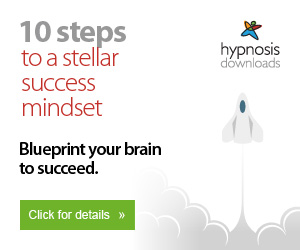
Ask me a question.
ARCATA, Calif., December 12, 2013 – Hypnosis has provided safe, comfortable and natural sedation during medical and dental procedures since before chemical anesthesia existed. The well-documented benefits include less need for medication, shorter procedures, faster recovery and cost savings. Despite the long history and dramatic results, many people find this amazing or difficult to believe.
Certainly there are less extreme applications of hypnosis. For dental patients in particular, it is very common to have fear or anxiety about receiving treatment. Some people have a sensitive gag reflex that makes it difficult to accept a dentist’s instruments in their mouth. Others damage their teeth with the unconscious act of grinding or clenching (bruxism). And still more people smoke tobacco, bite their fingernails, suck their thumb or fail to follow oral hygiene regimens prescribed by their dentist.
In each of these examples, a well-trained clinical or medical hypnotist can help resolve the issue with complementary or adjunct care to the dental work. This benefits both the dental patient and the dentist.
Scott Sandland, C.Ht. is a Board member of the International Medical and Dental Hypnotherapy Association and has worked on staff providing hypnosis in Southern California dental offices for over a decade. He says “most dentists get introduced to information about hypnosis in dental school, but then never incorporate it in their practice because they don’t know it is available locally or they get used to other tools.”
Hypnosis in dentistry is more common than it may seem. YouTube features many thousands of videos on the topic, including interviews with dentists who simultaneously perform hypnosis.
In the first video, dentist and hypnotist Dr. David Grayson addresses many of the examples above. He also mentions the ability of patients to control their bleeding in response to hypnotic suggestion. He says of this phenomenon, “If I hadn’t done that myself I probably would be skeptical but I did it and I saw it so I know it’s possible and done.”
Recently I underwent a dental procedure called “scaling and root planing,” explained in this video. While not as severe as a root canal or tooth extraction, patients almost always receive chemical anesthesia. This time it was done with only hypnosis provided by Juan Acosta, C.Ht. of San Diego, Calif.
Two fascinating aspects of the experience warrant mention. First, anesthesia implies numbness, the absence of sensation. This is typically the result when chemicals are used and can often be accomplished with hypnosis as well. However, as the video above documents, this experience was more like analgesia where there was sensation but not pain.
Hypnotic pain relief is often said to work by the “gate control theory” involving an interruption of a neural signal before it reaches the pain center of the brain. This is more likely to create hypnotic anesthesia. In this case, “mindfulness” allowed perception of sensation but separated and eliminated any emotional response to it, resulting in hypnotic analgesia.
The second factor worth noting is Acosta’s point in the video about hypnosis working based on expectation. In all ways except one, the dental visit shown exactly met expectations.
The night before the procedure, the magnitude of the impending experience seemed quite large to me. Reflecting on the after-effects of completing other big achievements, it seemed reasonable to expect a “big emotional drop” following the dental work. Interestingly, this did not occur.
Seeking to explain why not led to Wes Rocki, MD, PhD, a holistic physician practicing in Northern Virginia using hypnosis as the basic modality to treat pain and chronic diseases. He explains that “the post-procedure emotional drop did not occur because hypnosis prevented the emotional peak that otherwise would be created by the anticipation anxiety combined with acute stress related to the dental procedure.”
Specifically addressing the body’s chemical response to anxiety and stress, Rocki adds, “hypnosis therefore may eliminate or lower the need for injectable anesthesia which commonly includes a numbing agent, novocaine (or derivatives), combined with a vasoconstrictor from the epinephrine family of chemicals. Since epinephrine is a stress hormone it may potentiate the anxiety and in some people may induce heart palpitations and a feeling of rush or heat in the chest and/or head. Since those stressors are commonly prevented by the use of hypnosis, the body did not need to react with the post procedure emotional drop.”
As the video shows, hypnosis kept me calm, relaxed and unflinching throughout the dental work. Sandland points out, “this worked not because two hypnotists were involved but really due to just one. Many more are available to support dentists and make visiting them easier for dental patients.”
Eight days after filming this video, the same procedure was performed on the other half of my mouth, again without chemical anesthesia. At the conclusion of that visit, the hygienist observed my physical response was the same as the first time, a testament to both mindfulness and self-hypnosis.
Dave Berman, C.Ht. is a clinical/medical hypnotherapist and life coach practicing in northern California and globally via Skype.

This article is the copyrighted property of the writer and Communities @ WashingtonTimes.com. Written permission must be obtained before reprint in online or print media. REPRINTING TWTC CONTENT WITHOUT PERMISSION AND/OR PAYMENT IS THEFT AND PUNISHABLE BY LAW.
Article source: http://communities.washingtontimes.com/neighborhood/manifest-positivity/2013/dec/14/hypnosis-dentistry-long-history-and-new-insights/


No Comment